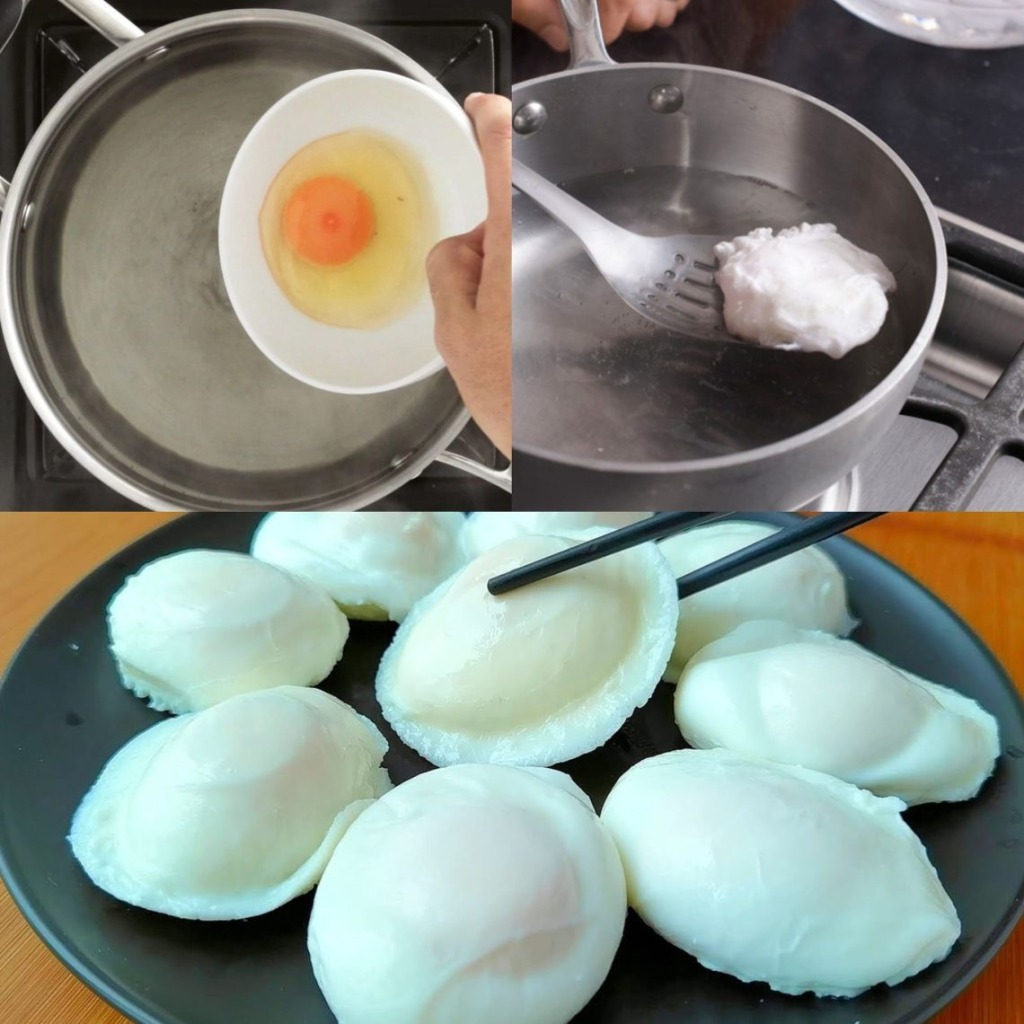ADVERTISEMENT
Directions
Preparing the Water
Boil the Water: Fill a medium-sized saucepan with about 3 inches of water and bring it to a gentle simmer. The water should be just barely bubbling.
Add Vinegar: Add a splash of vinegar to the water. This helps the egg whites to coagulate more quickly and stay together. You can also add a pinch of salt if desired.
Poaching the Eggs
Crack the Egg: Crack the egg into a small bowl or ramekin. This makes it easier to gently slide the egg into the water.
Create a Whirlpool: Using a spoon, create a gentle whirlpool in the simmering water. This helps to keep the egg whites together and form a neat poached egg.
Add the Egg: Gently slide the egg from the bowl into the center of the whirlpool. The swirling water will help the whites wrap around the yolk.
Cook the Egg: Allow the egg to cook for about 3-4 minutes, depending on how runny you like the yolk. For a firmer yolk, cook for an additional 1-2 minutes.
Remove the Egg: Use a slotted spoon to carefully lift the poached egg out of the water. Gently pat it dry with a paper towel to remove any excess water.
Kitchen Equipment Needed
Medium-sized saucepan
Small bowl or ramekin
Spoon
Slotted spoon
Paper towels
Tips for Perfect Poached Eggs
Fresh Eggs: Use the freshest eggs possible. Fresh eggs have firmer whites that hold together better when poaching.
Gentle Simmer: Keep the water at a gentle simmer. Boiling water can cause the eggs to break apart and become stringy.
Vinegar: While optional, adding vinegar helps the egg whites to coagulate quickly and form a neat poached egg.
Whirlpool: Creating a whirlpool in the water helps to wrap the whites around the yolk, resulting in a more compact and attractive poached egg.
Multiple Eggs: If poaching multiple eggs, you can add them one at a time, spacing them apart in the water, or use separate saucepans for each egg.
Storing Leftovers
Poached eggs are best enjoyed immediately, but you can store them in a bowl of cold water in the refrigerator for up to 2 days. To reheat, place the poached egg in a bowl of hot water for a few minutes until warmed through.
Recipe Variations and Swaps
Herbed Poached Eggs: Add a few fresh herb sprigs (such as thyme or dill) to the simmering water for a subtle herb-infused flavor.
Spicy Poached Eggs: Sprinkle a pinch of chili flakes or a dash of hot sauce on the poached egg for a spicy kick.
Poached Egg in Tomato Sauce: Poach the egg directly in a simmering tomato sauce for a delicious and hearty meal.
FAQ
Q: Can I poach eggs without vinegar?
A: Yes, you can poach eggs without vinegar, but it helps to coagulate the egg whites more quickly and neatly. If you prefer not to use vinegar, ensure the water is gently simmering and use the whirlpool method for best results.
Q: How do I know when the egg is done?
A: The egg is done when the whites are set, and the yolk is still soft to the touch. This usually takes about 3-4 minutes. You can cook for an additional minute or two for a firmer yolk.
Q: Can I poach eggs in advance?
A: Yes, you can poach eggs in advance and store them in cold water in the refrigerator for up to 2 days. Reheat them in hot water before serving.
Food Pairings
Poached eggs are versatile and can be enjoyed in a variety of dishes. Here are a few suggestions:
Avocado Toast: Top your favorite avocado toast with a poached egg for a delicious and nutritious breakfast.
Eggs Benedict: Classic eggs Benedict with hollandaise sauce, Canadian bacon, and poached eggs on an English muffin.
Salads: Add a poached egg to your favorite salad for extra protein and richness.
Call to Action
If you found this poaching method helpful, please share it with your friends and family! Don’t forget to subscribe to our blog for more cooking tips, recipes, and kitchen inspiration. Happy cooking!
ADVERTISEMENT
